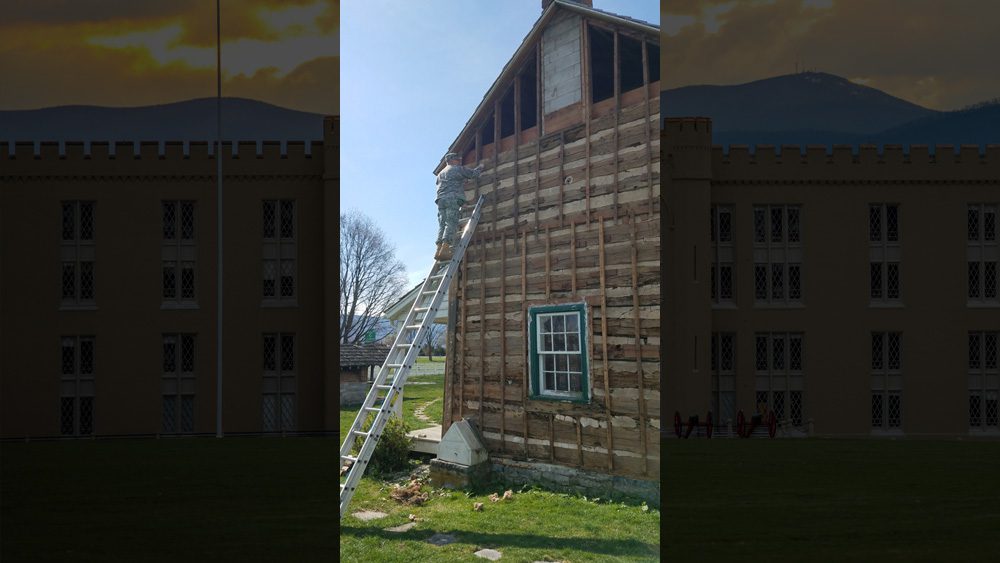A Surprise Find at Bushong House

Lt. Col. Troy Marshall inspects the Bushong house for damage during exterior renovations this spring. VMI photo courtesy of Lt. Col. Troy Marshall.

Lt. Col. Troy Marshall inspects the Bushong house for damage during exterior renovations this spring. VMI photo courtesy of Lt. Col. Troy Marshall.
This spring, exterior renovations at the Bushong house, located at the New Market Battlefield State Historical Park, revealed a very surprising finding—battle damage that hadn’t been discovered since the Civil War battle of New Market on May 15, 1864.
The Bushong house, a classic Shenandoah Valley farmhouse dating to 1818, was home to the Jacob Bushong family during the Civil War years. Seven family members hid in the basement while a fiercely fought battle between Union forces, led by Maj. Gen. Franz Sigel, and Confederates, under Gen. John C. Breckinridge, raged around them. On the day of the battle, the Bushong family’s once peaceful dwelling was at the center of the fight for control of the Shenandoah Valley.
Those who fought in the Battle of New Market recalled the ferocity of the battle near the house and adjacent orchard. Writing a first person account of the fighting that was published in the Lexington Gazette on May 25, 1864, Captain Frank Preston, son of VMI founder Col. J.T.L. Preston, wrote, “At the time we passed the house, the Federals were directing their fire upon us, and the house was made a sounding-board by the striking of the missiles upon its sides.”
One of those missiles, a round iron shot from a 3-inch Hotchkiss canister round, landed in the north wall of the Bushong house, and stayed there undiscovered until exterior renovations began in April of this year. When weatherboarding from a 1960s renovation was removed, Lt. Col. Troy Marshall, site director at the battlefield, walked around the house to inspect it—and that’s when he discovered the impacted ordnance. To the best of Marshall’s knowledge, no one had seen or documented it in the 155 years that have passed since the battle.
“The real irony, in my mind, is that the construction guys [in the 1960s] either didn’t see it or didn’t know what they were looking at,” Marshall commented.
Based on the location of the shot, Marshall suspects that the ordnance came from Union troops under the leadership of Capt. John Carlin, who commanded Battery D of the 1st West Virginia Light Artillery.
“We’ve left [the ordnance] in situ,” said Marshall, adding that interpretive signage will soon be placed near the spot. “It was a very exciting discovery.”